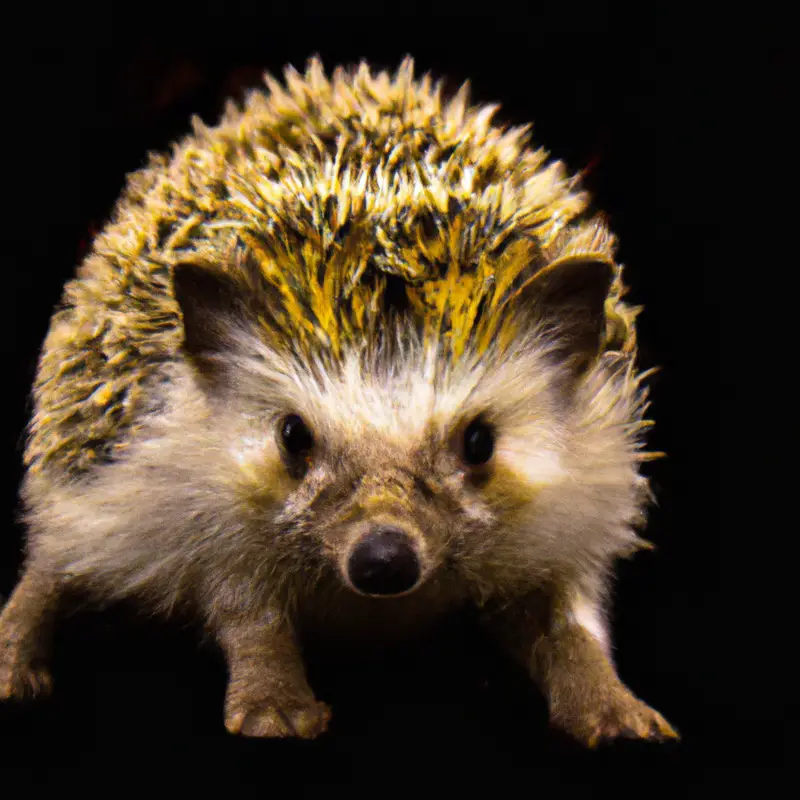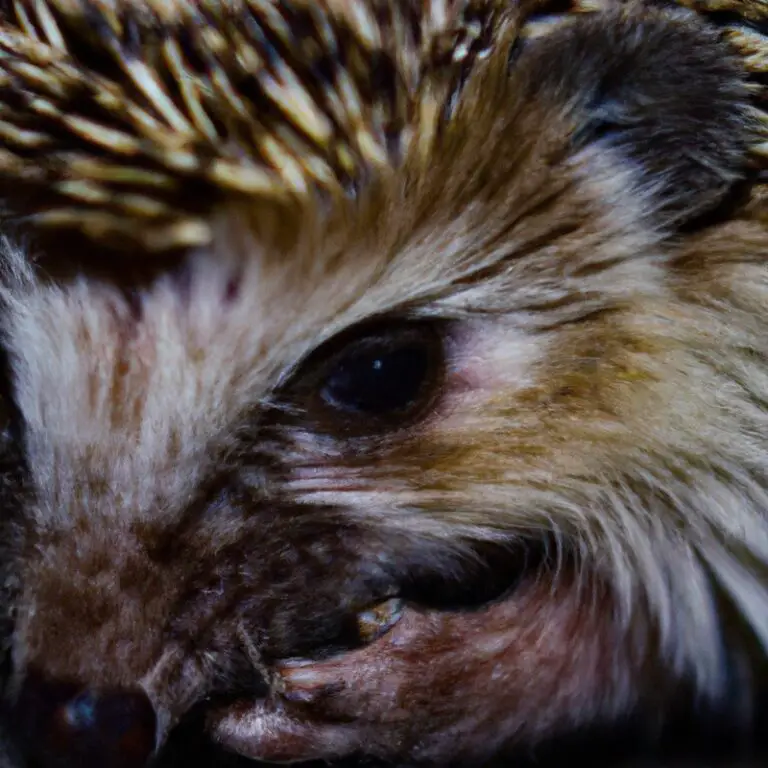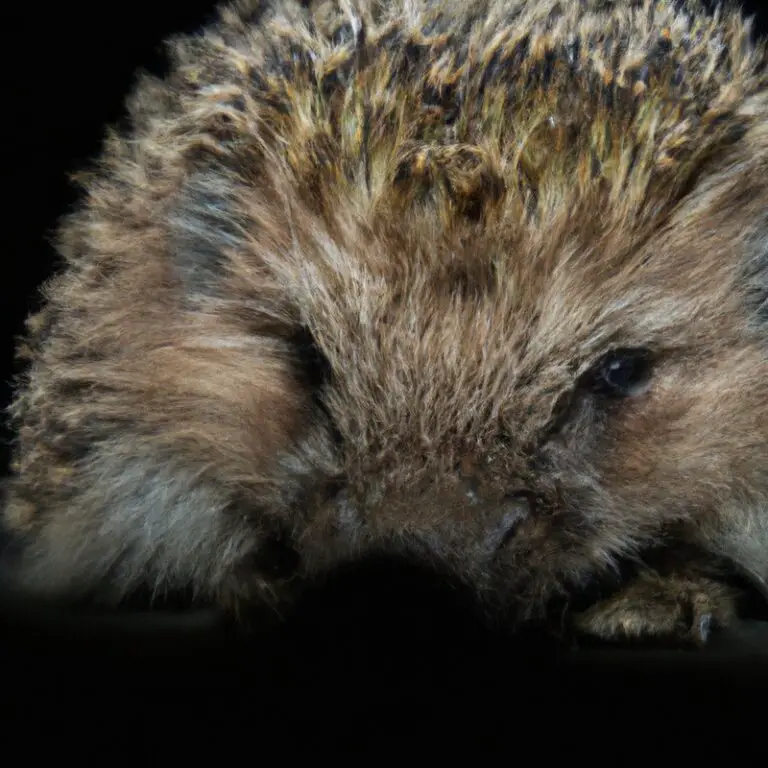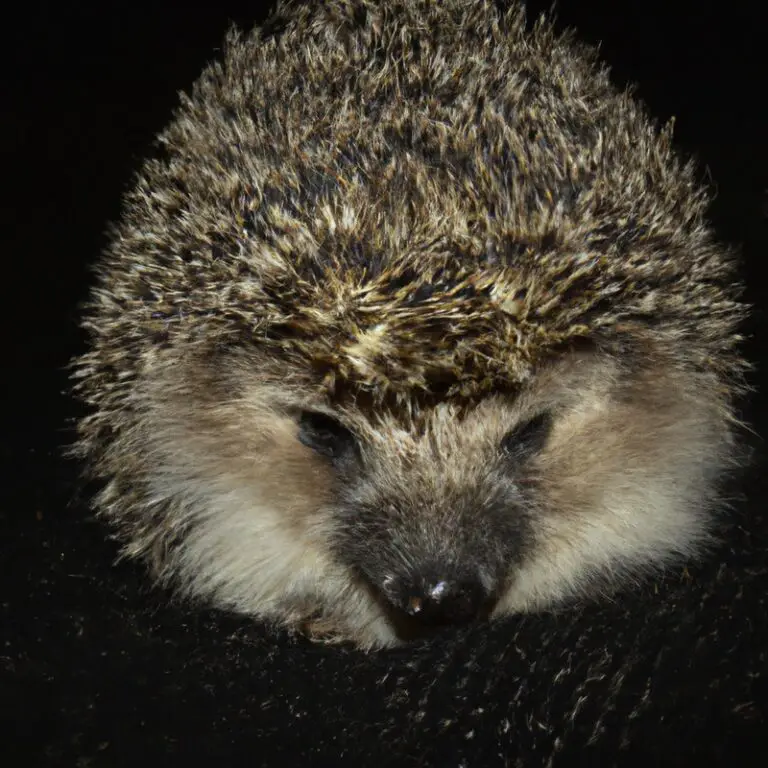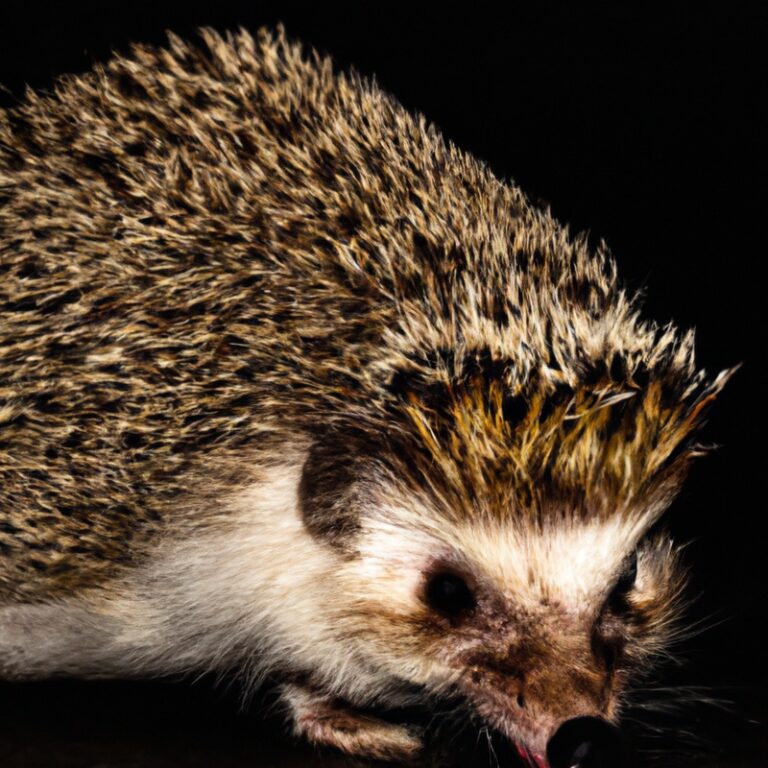How Do Hedgehogs Interact With Other Hedgehogs?
Key Takeaways:
- Hedgehogs are solitary creatures that typically prefer not to interact with other hedgehogs, except during mating season.
- When hedgehogs do interact, they may exhibit behaviors such as sniffing, circling, and mutual grooming.
- Hedgehogs may establish territories to avoid direct contact with other individuals.
- Aggressive encounters between hedgehogs can occur, especially if they feel threatened or are competing for resources.
Have you ever wondered how hedgehogs communicate and interact with one another?
These small, spiky creatures may seem more solitary, but their interactions are fascinating and crucial to their survival.
In this article, we will delve into the world of hedgehog social behavior, exploring how they communicate, establish territories, court potential mates, and defend themselves from threats.
We will also address common questions about hedgehog interactions, such as whether they can live together in groups or form strong bonds.
Get ready to unravel the intriguing world of hedgehog interactions!
| Interactions with Other Hedgehogs | |
|---|---|
| Communication | Hedgehogs communicate through a variety of vocalizations, body language, and scent marking. They use snorting sounds, clicks, and hisses to convey different messages. |
| Mating | Hedgehogs have specific mating behaviors, including courtship rituals and mate selection. Males may fight over females during the breeding season. |
| Sharing Territories | Hedgehogs have home ranges that they defend against intruders. While some hedgehogs are tolerant of sharing territories, others may exhibit aggression towards unfamiliar individuals. |
| Nest Sharing | In some cases, hedgehogs may share nests or hibernate together to conserve body heat during colder months. This behavior is more commonly observed in certain species. |
| Competition for Resources | Hedgehogs may compete for limited resources such as food, water, and shelter. This competition can lead to conflicts between individuals. |
Why Social Interaction is Important for Hedgehogs
Social interaction is vital for hedgehogs as it helps fulfill their social and emotional needs.
Hedgehog Diurnal vs. Nocturnal Behavior
Hedgehogs are primarily nocturnal animals, which means they are most active at night.
This behavior is due to their natural instincts and survival mechanisms.
During the day, hedgehogs tend to find a safe place to sleep, usually in a nest they have created.
They are known to be solitary creatures, and while they may tolerate the presence of other hedgehogs in their territory, they usually prefer to be alone.
At night, they venture out to search for food, explore their surroundings, and engage in activities such as mating.
Their nocturnal behavior allows them to avoid predators and find prey more easily, as well as regulate their body temperature more efficiently.
Hedgehogs have specialized adaptations, such as their quills and ability to roll into a protective ball, which help them survive in their nocturnal lifestyle.
Overall, hedgehogs are fascinating creatures with unique diurnal vs.
nocturnal behavior.
The Significance of Social Interaction for Hedgehogs
Hedgehogs are solitary creatures, but social interaction plays an important role in their lives.
Socializing helps hedgehogs form bonds, communicate, and learn from each other.
It allows them to establish territories, find potential mates, and navigate their environment more effectively.
Social interaction also provides mental and emotional stimulation, preventing loneliness and promoting overall well-being.
Hedgehogs engage in behaviors like sniffing, touching, and vocalizing to interact with each other.
These interactions are crucial for their social development and can enhance their quality of life.
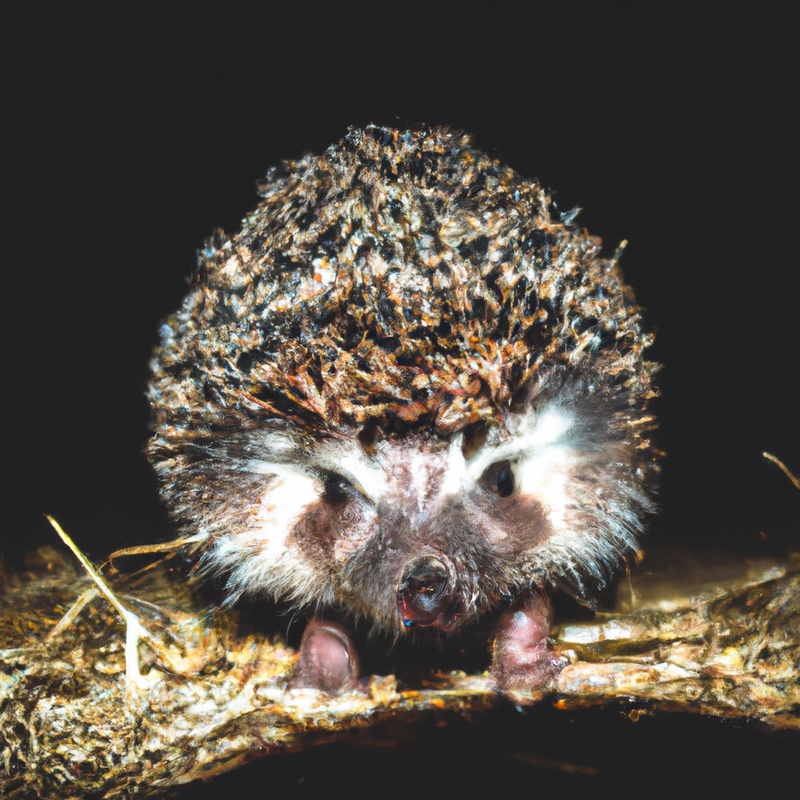
Different Types of Hedgehog Interactions
Hedgehogs have different types of interactions with each other. One type is social grooming, where they clean each other’s quills.
Another type is mating, which occurs during specific times of the year.
Hedgehogs may also exhibit aggressive behavior towards each other, especially when defending their territory. Additionally, they communicate through vocalizations, such as hissing or snorting.
Understanding these interactions can help us better care for pet hedgehogs and ensure their well-being.
Communication Methods Among Hedgehogs
Hedgehogs communicate through vocalizations, scent markings, and body language.
Vocalizations and Sounds
Hedgehogs use a variety of vocalizations and sounds to communicate with each other.
These include snorting, hissing, clicking, and even purring.
For example, a hedgehog may hiss when feeling threatened or annoyed, while purring is a sign of contentment.
These sounds are important for hedgehogs to convey their emotions and establish boundaries.
It’s fascinating how hedgehogs have their own unique ways of communicating through vocalizations and sounds.
Scent Markings
Hedgehogs use scent markings to communicate with other hedgehogs.
They have a scent gland located near their anus that produces a distinct odor.
When a hedgehog wants to mark its territory or communicate with others, it will rub its backside against objects or leave droppings with its unique scent.
This helps them establish boundaries and attract potential mates.
Through scent markings, hedgehogs can exchange information about their presence and readiness to reproduce.
This method of communication is essential for hedgehogs to navigate their surroundings and interact with other members of their species.

Body Language and Postures
Body language and postures play a significant role in hedgehog communication. They use their spines to convey different messages.
When a hedgehog is relaxed, their spines are lying flat.
If they feel threatened or scared, their spines will stand up to make them look bigger. Hedgehogs may also puff up their fur and make clicking or popping noises to display aggression.
They communicate through various postures like curling up into a ball to protect themselves or stretching out to show comfort.
Paying attention to these signals can help you understand and interact better with these adorable creatures.
Understanding Hedgehog Territorial Behavior
Hedgehog territorial behavior is key to understanding their interactions with each other.
Hedgehog Home Range
Hedgehog home range refers to the area where a hedgehog spends most of its time foraging, hunting, and nesting. It’s like their own little territory.
The size of the home range can vary depending on factors like food availability and population density.
Hedgehogs are solitary animals and generally prefer to have their space to themselves. However, their home ranges can overlap with other hedgehogs, leading to occasional encounters and interactions.
How Hedgehogs Establish Territories
Hedgehogs establish territories by marking their surroundings with scent, mainly through urine and feces.
They do this to communicate to other hedgehogs that the area is already claimed.
Hedgehogs will defend their territories from other hedgehogs, engaging in vocalizations and physical confrontations if necessary.
The size of a hedgehog’s territory can vary depending on the availability of food and suitable habitat.
This territorial behavior is an important aspect of their survival and reproductive success.
The Role of Aggression in Territorial Disputes
Aggression plays a significant role in territorial disputes among hedgehogs. When two hedgehogs encounter each other in their respective territories, they may engage in aggressive behaviors as a way to establish dominance and protect their territory.
This can include snorting, hissing, and even physical combat.
Aggression helps hedgehogs communicate their presence and assert their ownership over a particular area, reducing the likelihood of conflict in the future. Understanding this role of aggression is crucial in comprehending hedgehog territorial behavior.
Hedgehog Courtship and Mating Behavior
Hedgehog Courtship and Mating Behavior: Learn about their seasonal breeding patterns, courtship rituals, and the role of scent in attracting mates.
Seasonal Breeding Patterns
Hedgehogs have distinct seasonal breeding patterns.
They typically mate from April to September, with the peak mating season occurring from June to July.
During this time, male hedgehogs actively search for females by emitting distinct mating calls.
Once a female is found, they engage in courtship behavior, which involves circling, sniffing, and a ritualized dance.
The female then undergoes a gestation period of about 31-35 days before giving birth to a litter of 4-6 hoglets.
It’s important to note that hedgehogs have evolved to reproduce during specific times of the year to optimize the survival chances of their offspring.
Courtship Rituals and Displays
Courtship rituals and displays play a vital role in hedgehog mating.
The male hedgehog initiates courtship by sniffing the female and circling around her.
He may also perform a foot-paddling dance, emit low-frequency vocalizations, and display quill erection.
The female may respond by raising and lowering her head, flattening her spines, and making soft grunting sounds.
These rituals help hedgehogs establish compatibility and communicate their readiness to mate.
It’s fascinating to witness these unique courtship behaviors in the hedgehog kingdom!
The Role of Scent in Attracting Mates
Scent plays a vital role in attracting mates for hedgehogs. Hedgehogs have scent glands located near their genitals and mouths, which release a strong odor.
This scent marks their territory and helps them communicate with other hedgehogs.
During mating season, male hedgehogs use their strong scent to attract female hedgehogs. Females are drawn to the male’s scent and can determine his health and suitability as a potential mate.
The role of scent in hedgehog mating behavior is crucial as it allows hedgehogs to find and connect with suitable partners.
Hedgehog Reactions to Intruders and Threats
Hedgehogs have specific reactions when confronted with intruders and threats.
They employ defensive behaviors and predator avoidance techniques to protect themselves and their nests.
Defensive Behaviors
Defensive behaviors are an important aspect of a hedgehog’s interactions.
When faced with a threat or intruder, hedgehogs often display defensive behaviors to protect themselves.
These behaviors can include curling up into a tight ball, hissing, raising their spines, and making loud clicking sounds.
Hedgehogs may also try to run away or hide if they feel threatened.
These defensive behaviors help hedgehogs to stay safe and avoid potential danger.
Predator Avoidance Techniques
Hedgehogs have several predator avoidance techniques to protect themselves.
They rely on their spines as their first line of defense, which they can raise to deter predators.
Hedgehogs can also curl up into a tight ball when threatened, exposing only their spines.
They have excellent hearing and can detect predators from a distance, allowing them to move quickly to safety.
Additionally, hedgehogs are skilled at camouflaging themselves in their environment to avoid detection.
These techniques help hedgehogs stay safe in the wild.
Nest Protection and Defense
Nest protection and defense is a key priority for hedgehogs.
They create nests to provide a safe and warm environment for themselves and their young.
To protect their nests, hedgehogs use various defensive strategies.
They may curl into a ball, exposing only their spines.
Hedgehogs may also emit a loud hissing or growling sound, and if necessary, they will attack intruders by lunging or lunging towards them.
Overall, hedgehogs are determined to safeguard their nests and will do whatever it takes to keep them safe.
Frequently Asked Questions
Can Hedgehogs Live Together in Groups?
Hedgehogs generally prefer to live alone and are not naturally social animals.
They are territorial and may become aggressive or stressed when forced to share space with other hedgehogs.
However, in some cases, hedgehogs can tolerate living together if they are introduced early and have enough space, food, and hiding spots.
It’s important to closely monitor their behavior and be prepared to separate them if any signs of aggression or discomfort occur.
Why Do Hedgehogs Curl Up into a Ball when They Encounter Other Hedgehogs?
Hedgehogs curl up into a ball when they encounter other hedgehogs as a defense mechanism. It is their way of protecting themselves from potential threats.
By curling up, they create a barrier of sharp spines that deters other hedgehogs or predators from causing harm.
It’s a natural instinct that helps them stay safe in their environment.
Do Hedgehogs Form Strong Bonds with Other Hedgehogs?
Hedgehogs are solitary animals by nature and typically do not form strong bonds with other hedgehogs. They prefer to live and forage alone, only coming together during the breeding season.
While they may tolerate each other’s presence, they are unlikely to form long-lasting social relationships.
Hedgehogs primarily rely on their sharp spines for defense, rather than seeking companionship. It’s important to understand and respect their independent nature when interacting with hedgehogs in captivity.
How Do Wild Hedgehogs Interact with Domesticated Hedgehogs?
Wild hedgehogs and domesticated hedgehogs can interact in various ways. When introduced properly, they can coexist peacefully.
They may engage in behaviors such as sniffing each other, poking with their noses, or circling.
However, it’s essential to monitor their interactions and provide a safe environment to prevent any potential aggression or stress. Gradual introductions and supervised interactions are key to ensuring a positive experience for both wild and domesticated hedgehogs.
Final Verdict
Hedgehogs are social creatures that rely on interactions with other hedgehogs for various aspects of their lives.
From communication methods to territorial behavior, courtship, and defense, hedgehogs engage in intricate interactions with their fellow hedgehogs.
While they may exhibit territorial behavior and defensive reactions to threats, hedgehogs can also form social bonds and live together in groups under certain circumstances.
By understanding and fostering social interactions among hedgehogs, we can ensure their well-being and provide them with a fulfilling and enriched life.
Let us embrace the importance of social interaction for hedgehogs and promote their socialization in captivity.

